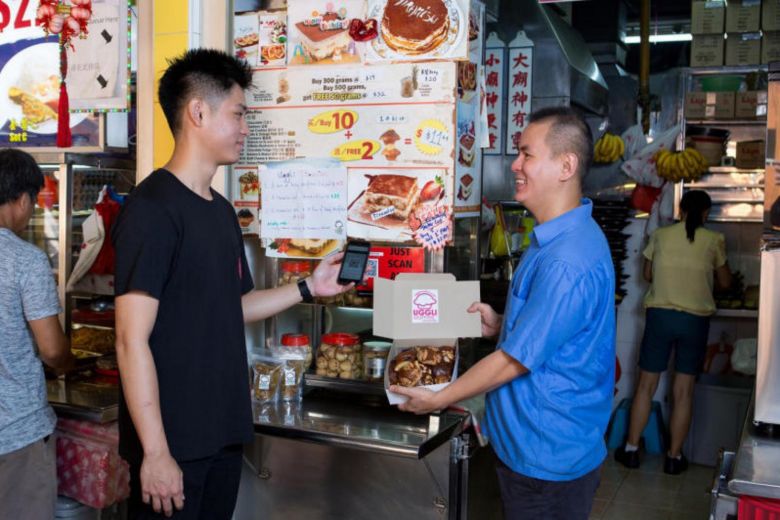Singapore: Cash still king for SMEs despite e-payments push
SINGAPORE – After years of a gradual shift to e-payments, talk has intensified over moving to a cashless society. Themes include the need to play catch up with some other countries, the way that cash is too easy to use here, and educating users and merchants about e-payments.
However, merchants The Straits Times spoke to say there are challenges surrounding the adoption of e-payments.
Mr Lim Jialiang, owner of chocolatier Demochoco that operates online and also has products in some bricks-and-mortar retail stores, is one of the more outspoken merchants who has spoken up about the race to be cashless.
The needs of Singapore – from say, China – are different and should be studied carefully with close regulatory follow-up action, he said.
Mr Anthony Seow, DBS head of cards and unsecured loans agrees that merchant take-up could be better, adding that the bank has been speaking to merchants to debunk “various myths circulating around digital payments: that high costs are involved in setting up the infrastructure to process payments, it is unsafe, it is complicated to use for both merchant and consumers”.
COSTS OF GOING CASHLESS
Credit cards can charge merchants as much as 3 per cent in fees.
Demochoco’s Mr Lim points out that credit cards are ubiquitous in Europe and Scandinavian countries as credit card fees are reined in, he said.
He added that the European Union, for instance, introduced a rule in December 2015 where merchants cannot be charged more than 0.3 per cent for accepting credit cards, and 0.2 per cent for debit cards.
Mr Rahul Shinghal, PayPal’s general manager of South-east Asia, stresses that “cash has a huge cost for the economy, government, consumer as well as businesses. Singapore spends upwards of $2 billion in managing cash and cheques. Every percentage point increase in cashless payments benefits everybody.
“When businesses adopt cashless means, they can expand their horizons beyond the local community. They’ll not be able to do that if they are only using cash so they also attract new customers and new sales, while consumers get more choices.”
However, the reality for small and medium-sized enterprises (SMEs) that make up 99 per cent of businesses in Singapore, is that there are costs to going cashless.
If even bigger firms like Courts Singapore, with 14 outlets, fork out three times more when they accept cashless payments as compared with cash, it is no wonder SMEs are hesitant about going cashless.
Mr Mark Lim, who co-owns fashion business Memories which has seven outlets in neighbourhoods here, said accepting credit cards does not make sense as the company’s prices do not justify the costs.
His shops sell clothes mostly ranging from $12 to $15, and accessories that can be just a few dollars. “I don’t mind using Nets as the fee is less than 1 per cent and it’s convenient,” he added.
On the other hand, he will accept cashless payments at his upcoming 4,400 sq ft lifestyle store at Jurong East called Ilahui, targeted at young people.
INFRASTRUCTURE AND CONVENIENCE
The apps now on offer are restrictive in the sense that the transactions can only be channelled through personal bank accounts.
Memories’ Mr Lim, a member of the Ang Mo Kio Constituency Merchants Association, noted that institutions like DBS Bank and Alipay have been talking to merchants about using their peer-to-peer (P2P) apps.
Over the past few months, DBS has been encouraging cash-based merchants such as hawker stalls, wet-market vendors and neighbourhood stores, to adopt its PayLah QR codes as a payment method.
A DBS spokesperson said as of Aug 30, more than 1,000 merchants have come on board, compared with some 700 in July. Most of them are food stalls at hawker centres and neighbourhood stores.
DBS point out that PayLah is currently free for merchants and there is no fee for any PayLah transactions, whether via mobile phone numbers or QR codes.
Memories’ Mr Lim said he did consider PayLah but decided against it as transactions go through personal bank accounts instead of corporate accounts. The DBS spokesman it is designed for P2P usage but the bank is “working on a corporate solution, to be rolled out in the near future”.
Some merchants have given feedback to DBS that since customers do not choose to use PayLah, especially when there are other options like credit cards or cash, the merchants see no point in signing up for such banking apps.
CREATIVE WAYS TO ENCOURAGE USAGE
Demochoco’s Mr Lim notes that more can be done to expand usage: “When you look at Alipay, WeChat Pay and such, the reason for their success is that their wallets are integrated into the system. The ubiquity is important. You can split bills on their apps for instance, and send money on the spot.
“They integrate it into everyday life. The question is what else can you do with PayLah or other e-wallets.”
Tech firm Razer, asked if these issues will be considered in the proposal for a nationwide e-payment system it is working on, said it had no comment but it “will share more information when we are ready”.
Singapore’s payments council is working on a QR code that can be read by any customer in Singapore, regardless of which banking app he is using, a move that will facilitate e-payments.
Mr Lim concludes: “I say this like a broken record but there’s a correlation. You need to consider that as a merchant, if I’m facing such fees, it’s hard for me to sell using a certain platform and I’ll just take myself out of the ecosystem.
“If you’re a popular chicken rice stall here, it’s unlikely you will care if you take card or cash.”
Source: http://www.straitstimes.com/business/banking/cash-still-king-for-smes-despite-e-payments-push


 English
English




